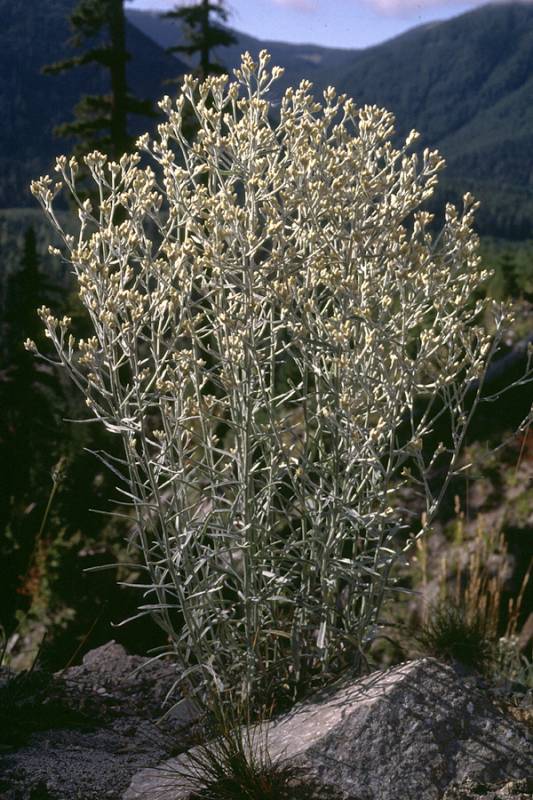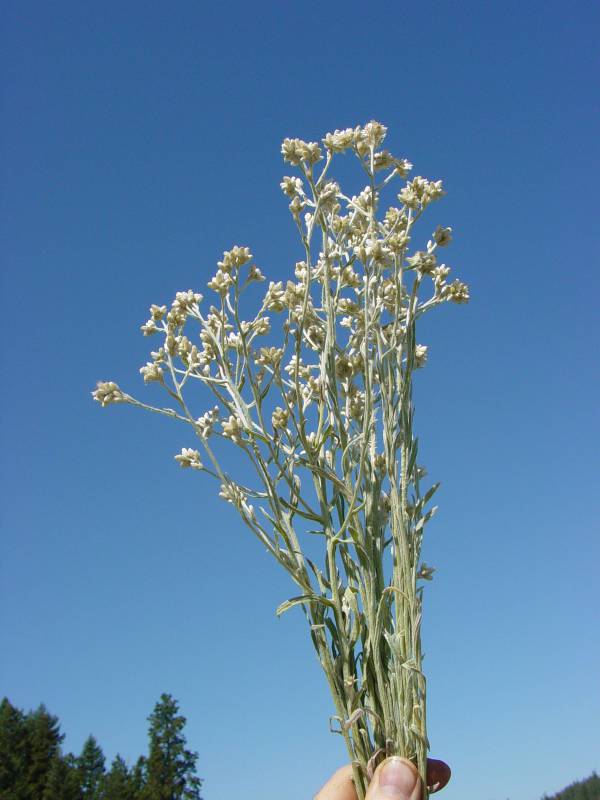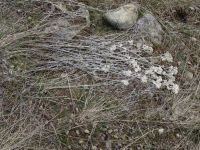Distribution: British Columbia to California, east to Idaho.
Habitat: Open, usually dry places, often in rocky or sandy soil.
Flowers: July - September
Conservation Status: Not of concern
Pollination: Bees, flies, beetles, wasps
Short-lived perennial with several stems from a taproot, 2-7 dm. tall.
Leaves numerous, broadly linear or the lower oblanceolate, 3-10 cm. long and 2-10 mm. wide.
Heads numerous in small, tight clusters, forming a broad, open inflorescence; involucre 4-7 mm. high, the numerous imbricate bracts woolly only at the base, white to tan; corollas all tubular, whitish, the outer slender and pistillate, the few inner coarser and perfect; pappus of capillary bristles, distinct, falling separately.
Achenes small, nerveless.
Publication: Opera Bot. 104: 147. 1991. 1991.
PNW Herbaria: Specimen records of Pseudognaphalium canescens in the Consortium of Pacific Northwest Herbaria database
WA Flora Checklist: Pseudognaphalium canescens checklist entry
OregonFlora: Pseudognaphalium canescens information
E-Flora BC: Pseudognaphalium canescens atlas page
CalPhotos: Pseudognaphalium canescens photos




